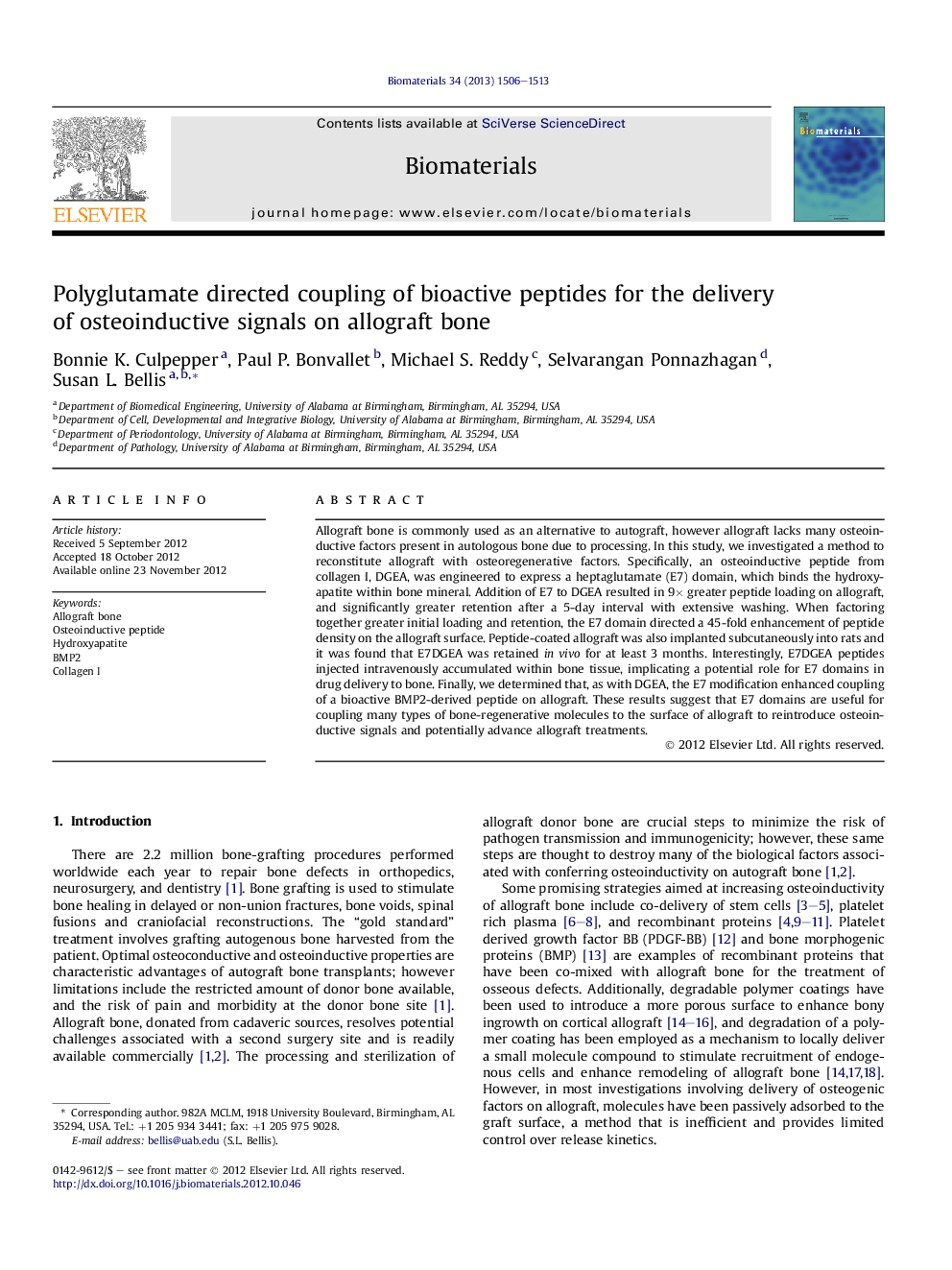| Article ID | Journal | Published Year | Pages | File Type |
|---|---|---|---|---|
| 10229216 | Biomaterials | 2013 | 8 Pages |
Abstract
Allograft bone is commonly used as an alternative to autograft, however allograft lacks many osteoinductive factors present in autologous bone due to processing. In this study, we investigated a method to reconstitute allograft with osteoregenerative factors. Specifically, an osteoinductive peptide from collagen I, DGEA, was engineered to express a heptaglutamate (E7) domain, which binds the hydroxyapatite within bone mineral. Addition of E7 to DGEA resulted in 9à greater peptide loading on allograft, and significantly greater retention after a 5-day interval with extensive washing. When factoring together greater initial loading and retention, the E7 domain directed a 45-fold enhancement of peptide density on the allograft surface. Peptide-coated allograft was also implanted subcutaneously into rats and it was found that E7DGEA was retained in vivo for at least 3 months. Interestingly, E7DGEA peptides injected intravenously accumulated within bone tissue, implicating a potential role for E7 domains in drug delivery to bone. Finally, we determined that, as with DGEA, the E7 modification enhanced coupling of a bioactive BMP2-derived peptide on allograft. These results suggest that E7 domains are useful for coupling many types of bone-regenerative molecules to the surface of allograft to reintroduce osteoinductive signals and potentially advance allograft treatments.
Related Topics
Physical Sciences and Engineering
Chemical Engineering
Bioengineering
Authors
Bonnie K. Culpepper, Paul P. Bonvallet, Michael S. Reddy, Selvarangan Ponnazhagan, Susan L. Bellis,
